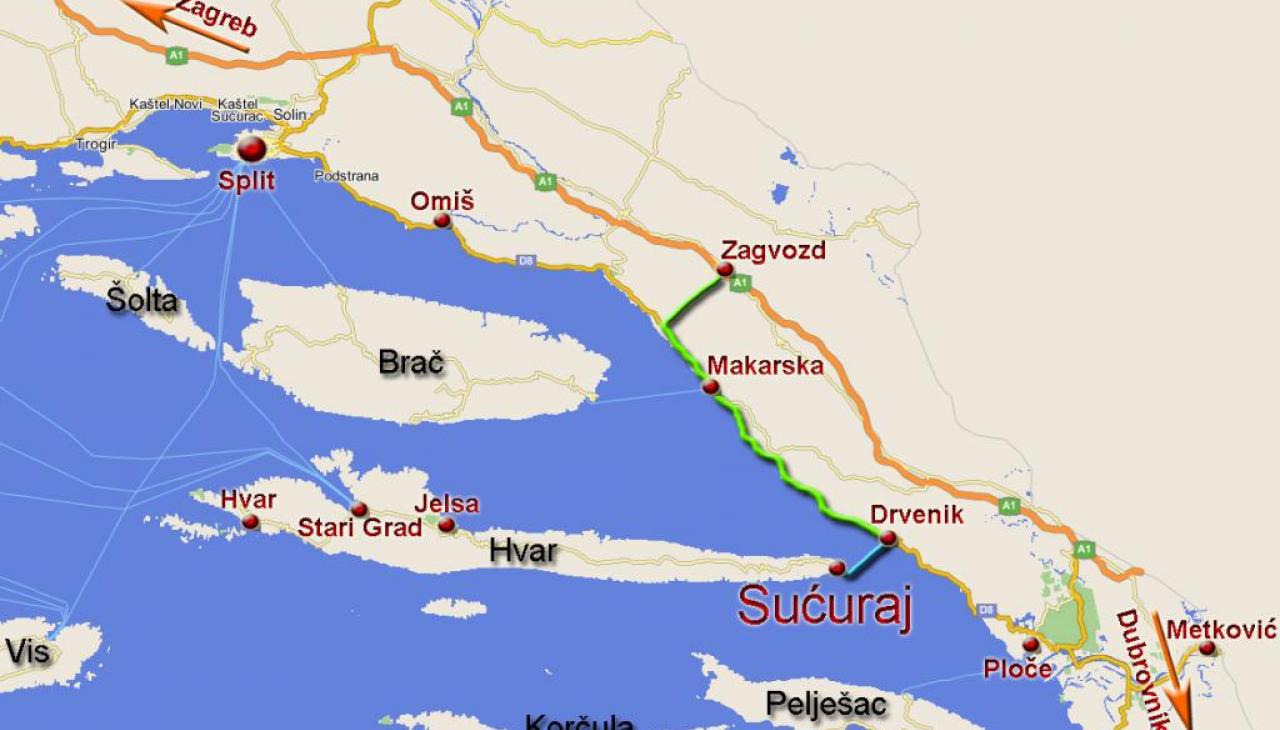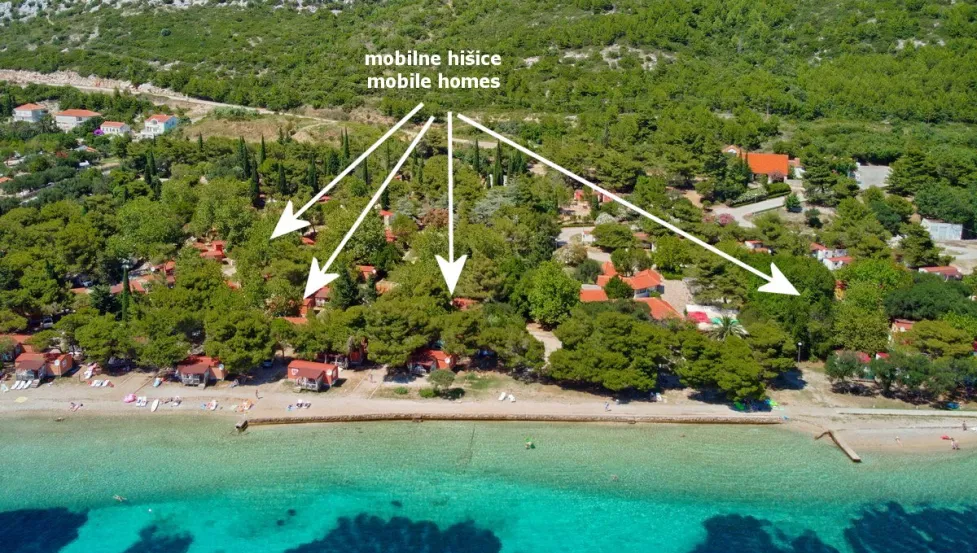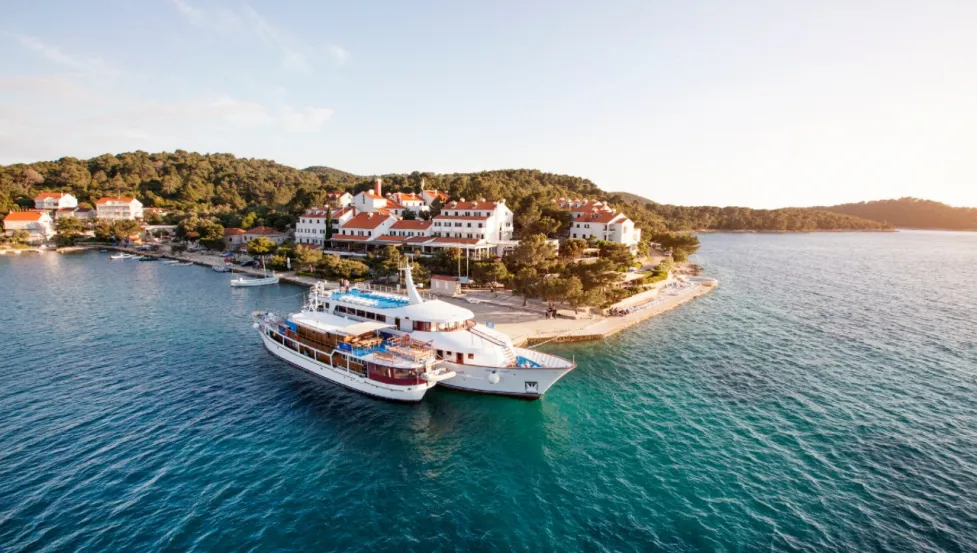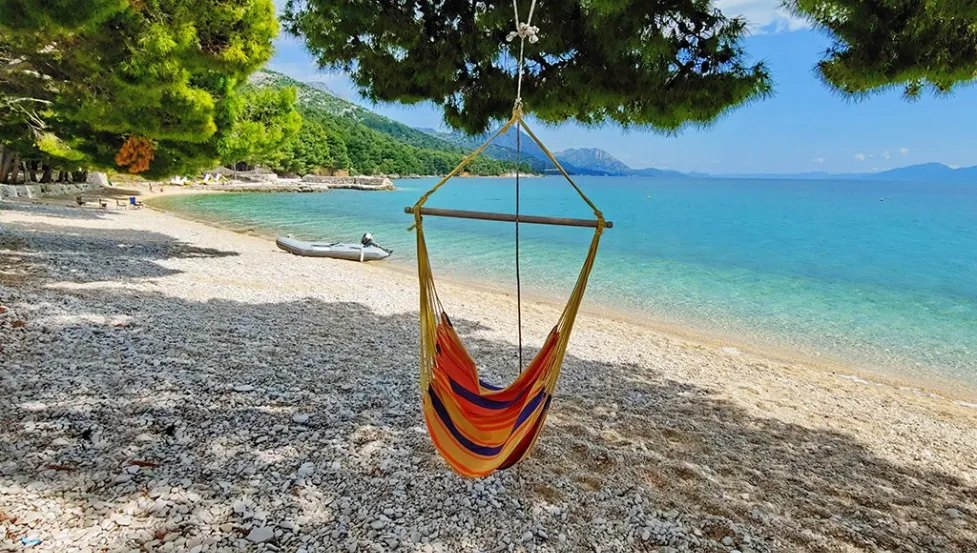Island Hvar
Island Hvar, Croatia
Hvar, the island in Adriatic Sea , is the longest and the sunniest Croatian island and one of the most beautiful islands in the world. It is a part of the central Dalmatian archipelago with the area of 299.6 sq km (length 68.2 km, width up to 10.5 km) and population of 10,648 inhabitants (2011). Hvar Island is administratively part of the Split-Dalmatia county in Dalmatia, Croatia.
Though representing a part of the diverse southern Croatian archipelago, formed by numerous islands, since the earliest days Hvar has been the subject of special recognition, distinguished by both its natural beauty and its cultural strata.
It was chosen by the earliest prehistoric inhabitants because of it's pleasant climate and convenient havens and its arable land well-suited for cultivation, as well as for the defence and construction possibilities it offered.
Due to its mild climate, the scent of lavender and other aromatic herbs which fills the air, the island of Hvar has been known as a health resort since 1868.
The major places (all on the coast of the island) are: the town of Hvar, Stari Grad, Jelsa, Sućuraj and Vrboska. Other places on the coast are: Milna, Sveta Nedilja, Ivan Dolac and Zavala. Places which aren’t on the coast are: Brusje, Grablje, Selca kod Starog Grada, Dol, Rudina, Vrbanj, Svirče, Vrisnik, Pitve, Humac, Poljica, Zastražišće, Gdinj, Bogomolje and Selca kod Bogomolja.
Island Hvar is separated from the island of Brac (by the Hvar Channel), from the island of Vis (by the Vis Channel), from the island of Korčula (by the Korčula Channel) and from peninsula Peljesac (by the Neretva Channel), while the east cape of the island (Sućuraj) is located just three nautical miles away from the mainland (Drvenik on Makarska Riviera). In front of the western part of the southern coast of Hvar are Pakleni Islands (Pakleni Otoci), and in front of the middle part the island of ŠČedro. A crest stretches across the middle part of the island, with the highest peak Sveti Nikola (St. Nicholas) (628 m); north of it is the fertile Big Field (Velo Polje). The northern coast of the island, with the spacious Stari Grad Bay and a number of coves, is much more indented than the southern.
The island Hvar is famous for its pleasant Mediterranean climate. The island is characterized by gentle winters, warm summers and many hours of sunshine (2,718 hours a year). Maximum temperatures are never too high to render agriculture impossible (the highest recorded temperature of 37°C was reached in 1935). An average air temperature in the winter months is 9.1°C (in January 8.4°C, in July 24.8°C). Snow occurs very rarely; in January there are three snowy days in ten years and in February only one.
Economy is based on tourism, fishing, farming, viticulture, olive growing and especially on cultivation of rosemary and lavender. The island of Hvar has three fish canneries: Sućuraj, Vrboska and Hvar. Major places on the island are connected by the regional road D-116 Hvar - Sućuraj. Ferry lines: Sućuraj – Drvenik, Stari Grad – Split, Stari Grad – Ancona (Italy). Boat lines: Hvar - Split and Jelsa – Bol (island Brac) - Split. More travel information you can find here.
The island of Hvar was populated already in the prehistoric times and later inhabited by the Illyrians, who came into conflict with the Greek colonizers in the 4th century BC. In Oglavak and Koščak (near Sućuraj on the east cape of island) was the position of the Illyrian queen Teuta place. Numerous tumuli on the island are of Illyrian origin. Hvar accepted the Greek settlers but was the only one that had an Ionic settlement (Pharos, today Stari Grad). Hvar played an important role in the Roman-Illyrian conflicts, when its rulers (Demetrije Hvaranin) tried to preserve its independence. In Roman times Hvar lost its earlier importance.
In the 7th century island Hvar came under the Principality of Croatia (Kingdom of Croatia since 925 till 1102). In the following centuries Hvar recognized the sovereignty of the Croatian-Hungarian ruler, the Bosnian King Tvrtko, the Split Duke Hrvoje, the Dubrovnik Republic, Venice, France, Austria, Italy, Yugoslavia and, finally, Republic of Croatia (since 1991).
In the 16th and the 17th centuries Hvar was a prominent centre of the Croatian literature (Petar Hektorović, Hanibal Lucić). The town of Hvar and other towns and villages on the island have numerous architectural and cultural monuments, which bear witness to outstanding artistic traditions of the island, the economic prosperity of its population and the relations Hvar used to maintain with cultural centres of the past centuries.
Friendly people, well-indented coast, numerous picturesque and intact beaches and bays, virgin nature, very rich historical and cultural inheritance, the scents of lavender, olive trees and wine are the reasons that island Hvar welcomes more and more tourists each year.
Besides health benefits and natural beauties, the city of Hvar is famous for its cultural heritage. The biggest main square in Dalmatia (an area of 4500m2), with many renaissance and baroque palaces, dominates the city which is surrounded by fortification walls dating from the 7th century.
Otok Hvar is the longest and the sunniest Croatian island.Croatia
Hvar, the island in Adriatic Sea , is the longest and the sunniest Croatian island and one of the most beautiful islands in the world. It is a part of the central Dalmatian archipelago with the area of 299.6 sq km (length 68.2 km, width up to 10.5 km) and population of 10,648 inhabitants (2011). Hvar Island is administratively part of the Split-Dalmatia county in Dalmatia, Croatia.
Though representing a part of the diverse southern Croatian archipelago, formed by numerous islands, since the earliest days Hvar has been the subject of special recognition, distinguished by both its natural beauty and its cultural strata.
It was chosen by the earliest prehistoric inhabitants because of it's pleasant climate and convenient havens and its arable land well-suited for cultivation, as well as for the defence and construction possibilities it offered.
Due to its mild climate, the scent of lavender and other aromatic herbs which fills the air, the island of Hvar has been known as a health resort since 1868.
The major places (all on the coast of the island) are: the town of Hvar, Stari Grad, Jelsa, Sućuraj and Vrboska. Other places on the coast are: Milna, Sveta Nedilja, Ivan Dolac and Zavala. Places which aren’t on the coast are: Brusje, Grablje, Selca kod Starog Grada, Dol, Rudina, Vrbanj, Svirče, Vrisnik, Pitve, Humac, Poljica, Zastražišće, Gdinj, Bogomolje and Selca kod Bogomolja.
Island Hvar is separated from the island of Brac (by the Hvar Channel), from the island of Vis (by the Vis Channel), from the island of Korčula (by the Korčula Channel) and from peninsula Peljesac (by the Neretva Channel), while the east cape of the island (Sućuraj) is located just three nautical miles away from the mainland (Drvenik on Makarska Riviera). In front of the western part of the southern coast of Hvar are Pakleni Islands (Pakleni Otoci), and in front of the middle part the island of ŠČedro. A crest stretches across the middle part of the island, with the highest peak Sveti Nikola (St. Nicholas) (628 m); north of it is the fertile Big Field (Velo Polje). The northern coast of the island, with the spacious Stari Grad Bay and a number of coves, is much more indented than the southern.
The island Hvar is famous for its pleasant Mediterranean climate. The island is characterized by gentle winters, warm summers and many hours of sunshine (2,718 hours a year). Maximum temperatures are never too high to render agriculture impossible (the highest recorded temperature of 37°C was reached in 1935). An average air temperature in the winter months is 9.1°C (in January 8.4°C, in July 24.8°C). Snow occurs very rarely; in January there are three snowy days in ten years and in February only one.
Economy is based on tourism, fishing, farming, viticulture, olive growing and especially on cultivation of rosemary and lavender. The island of Hvar has three fish canneries: Sućuraj, Vrboska and Hvar. Major places on the island are connected by the regional road D-116 Hvar - Sućuraj. Ferry lines: Sućuraj – Drvenik, Stari Grad – Split, Stari Grad – Ancona (Italy). Boat lines: Hvar - Split and Jelsa – Bol (island Brac) - Split. More travel information you can find here.
The island of Hvar was populated already in the prehistoric times and later inhabited by the Illyrians, who came into conflict with the Greek colonizers in the 4th century BC. In Oglavak and Koščak (near Sućuraj on the east cape of island) was the position of the Illyrian queen Teuta place. Numerous tumuli on the island are of Illyrian origin. Hvar accepted the Greek settlers but was the only one that had an Ionic settlement (Pharos, today Stari Grad). Hvar played an important role in the Roman-Illyrian conflicts, when its rulers (Demetrije Hvaranin) tried to preserve its independence. In Roman times Hvar lost its earlier importance.
In the 7th century island Hvar came under the Principality of Croatia (Kingdom of Croatia since 925 till 1102). In the following centuries Hvar recognized the sovereignty of the Croatian-Hungarian ruler, the Bosnian King Tvrtko, the Split Duke Hrvoje, the Dubrovnik Republic, Venice, France, Austria, Italy, Yugoslavia and, finally, Republic of Croatia (since 1991).
In the 16th and the 17th centuries Hvar was a prominent centre of the Croatian literature (Petar Hektorović, Hanibal Lucić). The town of Hvar and other towns and villages on the island have numerous architectural and cultural monuments, which bear witness to outstanding artistic traditions of the island, the economic prosperity of its population and the relations Hvar used to maintain with cultural centres of the past centuries.
Friendly people, well-indented coast, numerous picturesque and intact beaches and bays, virgin nature, very rich historical and cultural inheritance, the scents of lavender, olive trees and wine are the reasons that island Hvar welcomes more and more tourists each year.
Besides health benefits and natural beauties, the city of Hvar is famous for its cultural heritage. The biggest main square in Dalmatia (an area of 4500m2), with many renaissance and baroque palaces, dominates the city which is surrounded by fortification walls dating from the 7th century.













